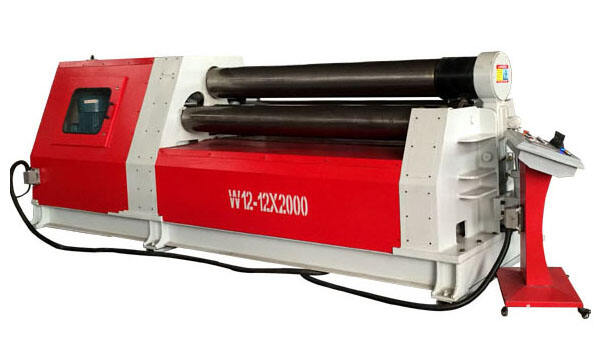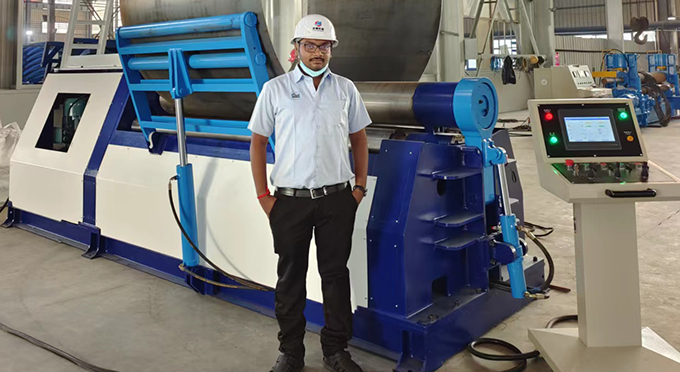Understanding Hydraulic Press Forming Requirements
Assessing Material Compatibility
Evaluating material compatibility is crucial when selecting a hydraulic press for forming operations. Metals like steel and aluminum are commonly used in hydraulic pressing due to their durability and malleability. Additionally, composites are gaining popularity for their lightweight and strong properties. Understanding these material types helps guide press selection effectively. It's important to analyze the tensile strength, ductility, and hardness of materials, as these factors contribute to successful forming processes. Conducting tests such as tensile testing or hardness testing can provide valuable insights into material suitability. For instance, tensile tests can reveal the ability of steel to withstand significant forces without breaking, which is essential for heavy-duty hydraulic pressing applications.
Calculating Required Tonnage for 200,000+ Ton Presses
Determining the required tonnage for hydraulic presses, especially those surpassing 200,000 tons, involves careful calculations based on material type, thickness, and complexity of the part being formed. There is a standard formula used in the industry that considers these parameters, ensuring the press provides adequate force for the task. Larger presses require specific calculations, which can differ significantly from standard tonnage estimations due to their extensive capabilities and unique applications. Reference data from engineering resources solidifies these tonnage calculations. For example, the recommended tonnage for forming high-strength aluminum alloys in aerospace components may exceed standard expectations due to the material's unique properties, necessitating precise tonnage measurement to ensure optimal forming results.
Key Hydraulic Press Types for Metal Forming
C-Frame vs. H-Frame Hydraulic Press Brake Machines
To achieve optimal results in metal forming, it’s crucial to understand the structural differences between C-Frame and H-Frame hydraulic press brake machines. C-Frame machines are known for their open-throat design, which provides easy access and maneuverability, making them ideal for light-to-medium tasks. In contrast, H-Frame presses offer increased robustness and are often favored for heavy-duty applications due to their evenly distributed force and stability. For instance, while a C-Frame press might be used for smaller components in industries like electronics, an H-Frame version would be more suitable for the automotive sector, where large parts are commonplace.
Three-Roll Plate Rolling Machine Integration
Integrating three-roll plate rolling machines with hydraulic presses can significantly enhance metal forming capabilities. These machines work by bending metal plates into curved shapes, which is essential when producing cylindrical structures, like tanks or pipelines. The flexibility and efficiency of a three-roll system allow manufacturers to achieve consistent and precise curves. In industries where precision is paramount, such as aerospace or energy, this integration ensures that metal forming processes are not only faster but also more reliable, leading to reduced production times and increased output.
Heavy-Duty Hydraulic Press Machine Applications
Heavy-duty hydraulic press machines find their place in industries that demand strength and precision, such as automotive, aerospace, and construction. These machines are particularly effective in processes like forging, stamping, and compaction, where they excel due to their ability to apply substantial force. For example, in the automotive industry, heavy-duty presses are instrumental in forming body panels and structural components. Expert testimonials often highlight the versatility and longevity of these machines, emphasizing their capability to perform complex tasks consistently over time. Such attributes make them invaluable across various heavy machinery applications.
Technical Specifications for Optimal Selection
Stroke Length and Ram Speed Considerations
Understanding the significance of stroke length is essential for optimizing production speed and managing part complexity. In hydraulic press specifications, the stroke length determines the movement extent of the ram, directly influencing the production capabilities of the machine. For instance, longer stroke lengths facilitate the manufacturing of deeper or larger components, therefore, aligning stroke length with the specific production requirements is crucial for efficiency. Conversely, ram speed, often a pivotal metric, affects both cycle time and the quality of a finished product. Faster ram speeds can greatly enhance productivity by reducing cycle time, allowing for more output in less time. Industry benchmarks suggest optimal stroke lengths range from 100 to 250 mm depending on application, and ram speeds can vary from 5 to 50 mm/s based on the press's capabilities and the metal forming complexity.
Energy Efficiency in Hydraulic Extrusion Presses
Energy efficiency in hydraulic extrusion presses is becoming increasingly pivotal as operational costs continue to rise. Hydraulic extrusion presses typically consume substantial amounts of energy due to their intensive operations. However, modern advancements in technology have led to newer models that offer significant energy-saving capabilities without compromising performance. For example, the incorporation of variable speed drives and energy recovery systems have been instrumental in reducing energy consumption. Recent studies highlight that such technologies can achieve energy savings of up to 30%, making them an attractive option for industries looking to cut costs and promote sustainability. In comparison to traditional mechanical and pneumatic systems, these energy-efficient hydraulic presses provide a balance between cost-efficiency and high performance.
Safety Standards Compliance
Compliance with safety standards is vital to ensure both operator safety and machine longevity when using hydraulic presses. Key safety regulations, such as OSHA standards and ISO certifications, provide a framework for safe hydraulic press operation. These standards often require implementing safety devices like light curtains, pressure relief valves, and emergency stop functions to protect operators and equipment. The importance of adherence to these standards cannot be overstated, as it significantly reduces the risk of workplace accidents and long-term injuries. Statistics indicate that compliance with safety regulations can reduce accident rates involving hydraulic presses by up to 50%. Ensuring that all operational protocols adhere to these safety guidelines not only mitigates risk but also serves to prolong the life of the machinery, yielding a better return on investment.
Advanced Features in Modern Hydraulic Presses
IoT-Enabled Predictive Maintenance Systems
IoT technology has significantly transformed maintenance practices in hydraulic presses by enabling real-time monitoring of machine performance and conditions. Through IoT integration, these systems can predict potential failures before they occur, allowing for timely interventions that minimize costly downtimes and extend machine life. Comparative studies reveal that predictive maintenance can reduce downtime by up to 25%, offering substantial savings compared to traditional reactive approaches. With predictive analytics powered by IoT, companies can effectively manage their hydraulic press operations, ensuring optimal performance, efficiency, and longevity.
Programmable Logic Controllers (PLCs) Integration
The integration of Programmable Logic Controllers (PLCs) in hydraulic presses significantly boosts automation capabilities, allowing for precise control over operational processes. PLCs facilitate improved accuracy, which reduces labor costs and enhances safety by automating complex tasks and minimizing human error. For instance, systems equipped with PLCs can consistently deliver accurate pressure and speed adjustments, essential for applications requiring tight tolerances. While PLC integration presents challenges such as programming complexity, it also offers benefits that outweigh these difficulties, making it integral to modern hydraulic press operations. Users should be aware of programming considerations and potential obstacles during integration to leverage its full potential efficiently.
Cost-Benefit Analysis and Operational Longevity
Total Cost of Ownership for Heavy Machinery
Understanding the total cost of ownership (TCO) is crucial for making informed decisions regarding heavy machinery investments, especially hydraulic presses. TCO encompasses not just the initial purchase price but extends to all associated costs, including maintenance and operational expenses over the machine's lifespan. By comparing different hydraulic press models and brands, businesses can better comprehend the financial implications and long-term planning required when investing in such machinery. Industry experts often emphasize that comprehensively evaluating TCO can shed light on more cost-effective options, ultimately guiding smarter purchasing decisions. Testimonials from seasoned professionals underline the importance of considering TCO as it impacts the overall economic strategy and sustainability of operations.
Preventive Maintenance Best Practices
Regular preventive maintenance is vital for extending the operational life of hydraulic presses and ensuring their efficiency. Essential tasks include routine inspections, lubrication of moving parts, and timely replacement of filters. Scheduling these maintenance activities based on the type and frequency of usage helps prevent unexpected breakdowns and boosts productivity. Studies have consistently shown that preventive maintenance can significantly reduce failure rates and enhance efficiency, directly contributing to increased operational longevity. Planning and executing these tasks with precision ensure that hydraulic presses remain functioning optimally, minimizing downtime and repair costs.



